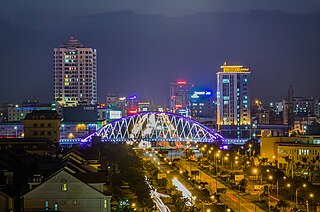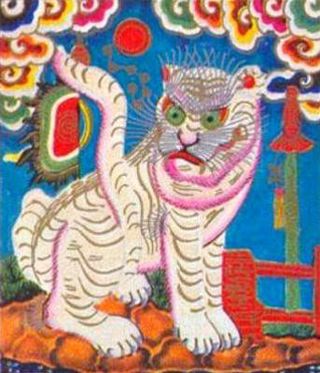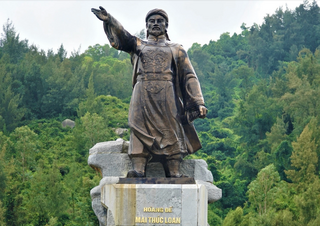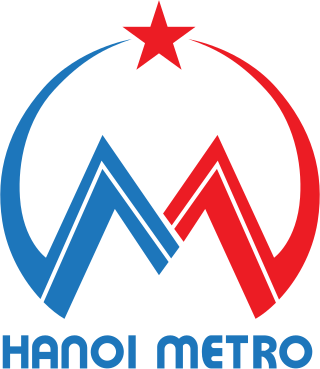
Hanoi is the capital and second-most populous city of Vietnam. The name "Hanoi" translates to "inside the river". As a municipality, Hanoi consists of 12 urban districts, 17 rural districts, and one district-level town. The city encompasses an area of 3,359.84 km2 (1,297.24 sq mi) and as of 2023, a population of 8,587,100. Hanoi had the second-highest gross regional domestic product of all Vietnamese provinces and municipalities at US$51.4 billion in 2022, behind Ho Chi Minh City.

Transportation in Vietnam is improving rapidly in terms of both quantity and quality. Road traffic is growing rapidly but the major roads are dangerous and slow to travel on due to outdated design and an inappropriate traffic mix. In recent years, the construction of expressways has accelerated. Air travel is also important for long-distance travel. The two major metropolises of Hanoi and Ho Chi Minh City have operating metro networks which are currently being expanded.

Haiphong or Hai Phong is the third-largest city in Vietnam and is the principal port city of the Red River Delta. The municipality has an area of 1,526.52 km2 (589.39 sq mi), consisting of 8 urban districts, 6 rural districts and 1 municipal city (sub-city). Two of the rural districts cover islands in the South China Sea: Bạch Long Vĩ and Cát Hải. It has a population of 2,130,898 in 2023. The city's economy has strength in manufacturing, as evident by large industrial parks and numerous smaller traditional handicraft villages. Historically, Haiphong is the first place in Vietnam and Mainland Southeast Asia to get electricity.

Ninh Bình is a province of Vietnam in the Red River Delta region of the northern part of the country. The province is famous for a high density of natural and cultural attractions, including reserved parks in Cúc Phương National Park and Vân Long, grotto caves and rivers in Tràng An, Tam Cốc-Bích Động and Múa Caves, historic monuments in the Hoa Lư ancient capital, Vietnam's largest buddhist worshiping complex, and the Phát Diệm Cathedral with "eclectic architectural style". Thanks to its adjacency to Hanoi, day trips from the capital are easily manageable.

Đồng Hới is the capital city of Quảng Bình Province in the north central coast of Vietnam. The city's area is 155.71 km2 (60.12 sq mi). Population as per the 2019 census was 133,672. It is served by National Highway 1A, the Đồng Hới Railway Station, and airport. By road, Đồng Hới is 486 kilometres (302 mi) south of Hanoi, 195 kilometres (121 mi) south of Vinh, 160 kilometres (99 mi) north of Huế and 1,204 kilometres (748 mi) north of Hồ Chí Minh City. It borders Quảng Ninh District on the west and south, the South China Sea on the east, Bố Trạch District on the north.

Hà Đông is an urban district (quận) of Hanoi, the capital city of Vietnam. The district has 17 wards, covering a total area of 49.64 square kilometres (19.17 sq mi). As of 2019, there were 397,854 people residing in the district, the third highest of all districts in Hanoi, after Hoàng Mai. The district borders Thanh Trì district, Thanh Xuân district, Nam Từ Liêm district, Hoài Đức district, Quốc Oai district, Chương Mỹ district, Thanh Oai district.

Ðông Hồ painting, full name Đông Hồ folk woodcut painting is a line of Vietnamese folk painting originating in Đông Hồ village.

Gia Lâm is the easternmost urban district (quận) of Hanoi, the capital city of Vietnam. Prior to 2003, the district covered the entire area of Long Biên district, which included Long Biên Bridge, Gia Lâm Airport, Gia Lâm railway station, Gia Lâm bus station and the headquarters of Vietnam Airlines. On 22 September 2023, the Hanoi People Committee approved Gia Lam to become the next urban district of Hanoi.

Cầu Giấy is an urban district of Hanoi, the capital city of Vietnam. It is located roughly to the west of urban Hanoi. Cầu Giấy has a unique urban landscape, with new urban developments interlacing old historical artisan villages. The most well-known of them is a cluster of Dịch Vọng villages with its popular cốm dessert.

Đống Đa is one of the four original urban districts (quận) of Hanoi, the capital city of Vietnam. It is bordered by Ba Đình to the north, Hoàn Kiếm to the northeast, Hai Bà Trưng to the east, Thanh Xuân to the south, and Cầu Giấy to the west. The district currently has 21 wards, covering a total area of 9.95 square kilometres (3.84 sq mi). It is the most populous district in Hanoi. As of 2017, there were 420,900 people residing in the district, the population density is 42302 inhabitants per square kilometer, 18 times higher than the overall density of Hanoi. Dong Da district is home to various enterprises and many of Vietnam's most prestigious universities such as Hanoi Medical University, Foreign Trade University, University of Transport and Communications, Thuyloi University.

Đồng Xuân Market is a market in the center district Hoàn Kiếm of Hanoi, Vietnam. Originally built by the French administration in 1889, Đồng Xuân Market has been renovated several times with the latest being in 1994 after a fire that almost destroyed the market. Nowadays, Đồng Xuân Market is the largest covered market of Hanoi where the wholesale traders sell everything from clothes and household goods to foodstuffs.

Xẩm or Hát xẩm is a type of Vietnamese folk music which was popular in the Northern region of Vietnam but is nowadays considered an endangered form of traditional music in Vietnam. In the dynastic time, xẩm was generally performed by blind artists who wandered from town to town and earned their living by singing in common places. Xẩm artists often play đàn bầu or đàn nhị to accompany the songs themselves, and sometimes they form a band with one singer and others who play traditional instruments such as the drum or phách. The melodies of xẩm are borrowed from different types of Vietnamese folk music such as trống quân or quan họ, while its themes are generally The Tale of Kiều, Lục Vân Tiên, and other popular Vietnamese stories.

Hàng Trống painting is a genre of Vietnamese woodcut painting that originated from the area of Hàng Trống and Hàng Nón streets in the Old Quarter of Hanoi, Vietnam. In the past, Hàng Trống painting was an essential element of the Tết Nguyên Đán holiday in Hanoi, but today this tradition almost has disappeared and authentic Hàng Trống paintings are found only in museums or fine art galleries. However, the art of making Hàng Trống paintings is always considered a symbol of traditional culture and aesthetic value of Vietnam.

Lê Trọng Tấn was an officer of the People's Army of Vietnam (PAVN) during 1945 to 1986. During this period of his military career, Lê Trọng Tấn held several senior positions of the Army. Lê Trọng Tấn participated in the Viet Minh movement before the August Revolution in 1945 and gradually became one of the most important figures of the Vietnam People's Army during the Second Indochina War. Being one of the key figures of the North Vietnam armed forces in Vietnam War, Lê Trọng Tấn was Deputy Commander of the Viet Cong (VC) and second commander of the 1975 Spring Offensive that effectively ended the war. Afterwards, he became Chief of the General Staff and Deputy Minister of Defence of Vietnam until his death in December 1986. Lê Trọng Tấn was widely appreciated by his comrades, whom of which include general Võ Nguyên Giáp, as one of the finest commanders of the Vietnam People's Army.

Mai Thúc Loan (or Mai Huyền Thành, self-proclaimed Mai Hắc Đế, was the Vietnamese leader of the uprising in 722 AD against the rule of the Chinese Tang dynasty in the provinces of Hoan Châu and Ái Châu. Regarded as one of the major rebellions during the Third Chinese domination, the uprising of Mai Thúc Loan succeeded in capturing the capital Songping of the Tang's Annan protectorate and Mai Thúc Loan thus proclaimed himself Mai Hắc Đế, the emperor of the independent region for a short time before being put down by the military campaign after the order of the Emperor Xuanzong of Tang. Today Mai Thúc Loan is praised as one of the early national heroes in the history of Vietnam who contributed for the struggle for independence of the country.

The Hanoi Metro is a rapid transit system in Hanoi, the capital city of Vietnam. Owned by Hanoi's People Committee and operated by Hanoi Metro Company (HMC), it is the first operational rapid transit system in Vietnam. The system includes elevated and underground sections. The first line, Line 2A, opened to service on 6 November 2021. The first section of the second line Line 3 opened on 8 August 2024.

Buses are one of the main types of public transport in Hanoi, beside Hanoi Metro, operated by the state-owned Transerco and several private companies serving the city centre and towns in greater Hanoi as well as connecting Hanoi with neighbouring provinces. Buses in Hanoi are easily recognisable with their blue paint scheme, while some others are also painted green, orange and older red-yellow colours. The earliest bus service begins at 4:30 a.m. while the latest bus departure across the network is at 10:30 p.m. Service may be extended to 11:30 p.m. on weekends on select routes. Most Hanoi buses are equipped with an audio system to announce the stops. LED panels at some bus stops display live route information.

Hanoi Metro Line 2A, also known as the Cát Linh Line, is an elevated mass transit railway line which is part of the Hanoi Metro network. It is the first rapid transit line to operate in Vietnam and was opened for service on 6 November 2021.

Hanoi Metro Line 3, also known as the Văn Miếu Line, is a medium-capacity rapid transit service of the Hanoi Metro network, operated by Hanoi Metro Company. Colored dark red on transit maps, the line currently runs from Nhổn, a suburb in Bắc Từ Liêm District, west of city center, to its current terminus in Cầu Giấy Bus Interchange, located in Cầu Giấy district. When fully operational, the line will continue eastbound toward Hanoi Station, providing a direct connection to downtown Hanoi and the city's main railway station. The line operates between 5.30 am and 10pm, with headways of 6 minutes during peak hours, and 10 minutes during off-peak hours. All trains on Line 3 operate with a 4-cars formation.

Yên Nghĩa Station is a metro station in Hanoi, located in Hà Đông, Hanoi.























